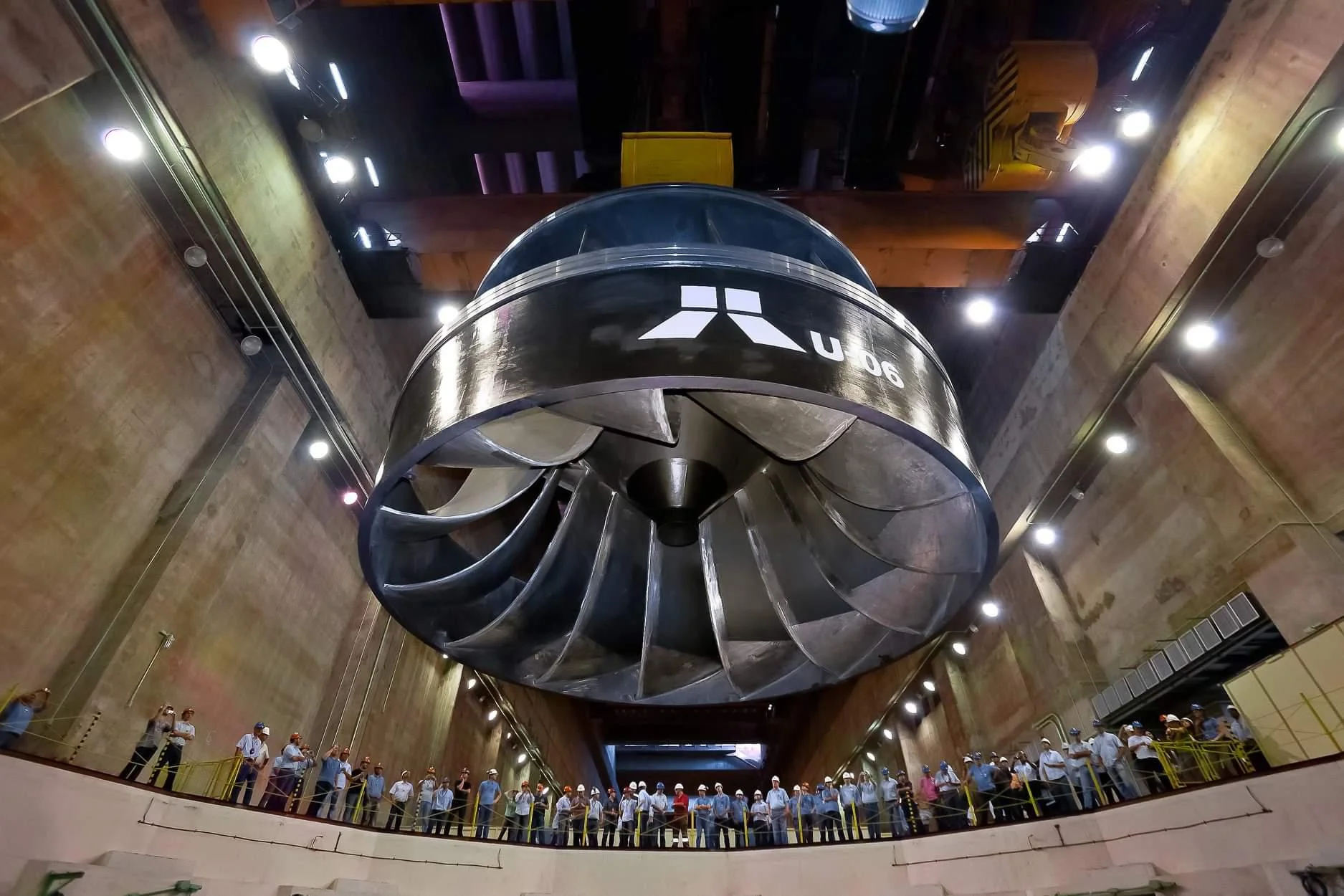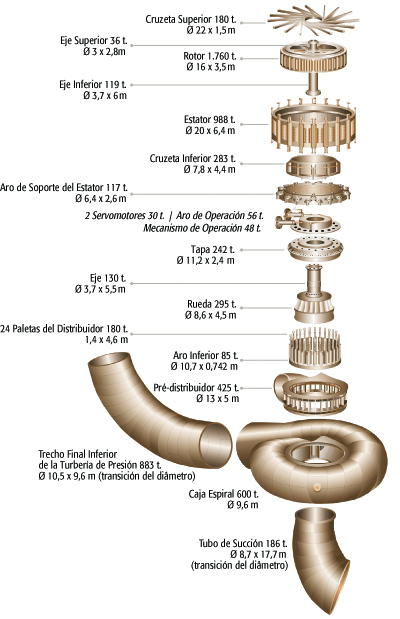
Inside the Itaipú Dam, Paraguay and Brazil's Hydro Colossus
An in-depth look into the bowels of the Itaipú Dam, the world's second-largest hydroelectric dam.
Behind these monumental concrete walls, there is a story that begins in 1975, a time when two countries started what is now the second biggest hydroelectric plant in the world, second only to the Three Gorges Dam in China.
This is the story of the Itaipú Dam.
This December, the Luxor team had the privilege to visit this modern marvel, which is responsible for powering the entire nation of Paraguay. It also produces most of the power consumed in one of the most populated cities in the world: São Paulo, Brazil.
Today, we will take you on a journey into the colossus and unpack the implications of how Bitcoin Mining could make use of the dam's power abundance to benefit its operating countries.
The Itaipú Dam, Where Two Countries Meet
Located on Paraguay’s border with Brazil, the Itaipú Dam draws its power from the Paraná river and is located right outside the city of Ciudad del Este. Brazil and Paraguay each own 50% of the dam’s power generation company Itaipú Binacional, which in guaraní means “singing stone.”
The gigantic project required funds from the International Monetary Fund and took over 17 years to be completed (1975-1991). 40,000 workers compiled more than 170,000 tons of concrete to construct the dam, which can produce up to 14 GW/h of power. Brazilian and Paraguayan skilled workers operate the dam 24/7.

Itaipú Dam Turbines and Dispatch Room
We started our tour from the top of the dam and made our way down. As the pictures below show, twenty large cylinders and a great 130 foot-tall wall of concrete reinforce the dam against the Paraná river. At the end of each cylinder there is a top-notch Siemens turbine that rotates with 185,000 gallons of water per second. Each turbine produces 700 MW/h for a total of 14,000 MW/h of production capacity.


As we made our way downstairs we visited the dispatch room. This office is responsible for analyzing the real-time supply and demand of electricity for Paraguay and Brazil. Electricity supply and demand varies depending on natural events such as heat waves, which create more electricity demand for air conditioning systems, or social events, like the world cup, which considerably increases the electricity demand for football fans. A phenomenal dashboard monitors and tracks each country’s electricity consumption, electricity production quality, hydrologic status (water levels), and other other key metrics to ensure smooth operations.

With a sophisticated supervisory control and data acquisition system (SCADA), operators can call the machines room to make adjustments to power up additional turbines in case power demand increases. If there’s not enough demand and water levels rise too much, the operators can open the exhaust valves to “drain” the excess water without producing power.
Itaipú Dam Machine Room and Gallery Level
In the machine room, you’ll find a merge of analog and digital panels that are controlled by the dam’s bi-national team. Remember, this is a joint venture between Brazil and Paraguay, and per the original management and operational arrangement, the countries split the work in equal parts. As an interesting touch, there are lines in the facility that delineate the borders for either country.

As you can imagine, the industrial complex is huge and in certain areas, so workers hardly ever navigate the dam by walking. That’s right, they use bicycles to move within the hydroelectric facility.
We made our way down to where the magic happens: the turbine and its working parts (the shaft, rotor, and turbine itself). Capable of utilizing as much as 185,000 gallons of water per second, these turbines turn water power into mechanical energy which, with the help of several instruments, becomes electrical energy.


The dam's wall is a masterpiece of modern engineering, and it diverts the original flow of the Paraná river through the dam's turbines. The pictures below offer an impressive view of the wall that separates the river from the dam and the landscape surrounding it: a 590 foot wall of concrete, which is triangular in shape to ensure stability and structural integrity. There are over three-thousand gauges that monitor the structural integrity of the dam.

The Itaipú Dam Is a Bitcoin Miners Dream
After we finally came back to surface level, we left having witnessed how one of the world’s largest hydroelectric dams works. Engineering aesthetics aside, the dam provides immense value it provides to both countries that own it. The dam’s max power production (7 GWh) is more than twice Paraguay’s electricity consumption (3 GWh). Both Brazil and Paraguay are in a strategic geographical position to welcome industries that require large amounts of power consumption (like Bitcoin mining). A large electricity consuming industry like Bitcoin mining can help Paraguay by balancing power costs for its population, while also increasing the amount of dispatchable power available.

Are you scaling a Bitcoin mining operation and in need of mining software, services, or hardware? We can help. You can reach us here.
Hashrate Index Newsletter
Join the newsletter to receive the latest updates in your inbox.







